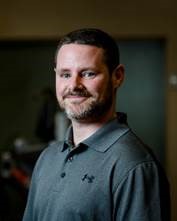Dr. Kevin Power, Associate Professor in the in the School of Human Kinetics and Recreation at Memorial University of Newfoundland (Canada), will visit Delsys on Monday January 8th to present his research.
In quadrupeds, special circuity located within the spinal cord, referred to as central pattern generators (CPGs), is capable of producing complex patterns of activity such as locomotion in the absence of descending or ascending input. During these motor outputs, the electrical properties of spinal motoneurones are modulated such that the motoneurone is more easily activated. Indirect evidence suggests that like quadrupeds, humans also have spinally located CPGs capable of producing locomotor outputs, albeit descending input is considered to be of greater importance. Whether motoneurone properties are reconfigured in a similar manner to those of quadrupeds is unclear. This presentation will summarize our current state of knowledge regarding the modulation of motoneurone excitability during CPG-mediated motor outputs using non-human animal models. This will be followed by more recent work aimed at understanding changes in motoneurone excitability during CPG-mediated motor outputs in humans. Finally, a brief description of ‘next steps’ in understanding spinal motoneurone excitability during locomotor outputs in humans will be presented.
Dr. Kevin Power
Associate Professor
School of Human Kinetics and Recreation
Memorial University of Newfoundland

Kevin Power is an Associate Professor in the School of Human Kinetics and Recreation at Memorial University of Newfoundland. He obtained a Bachelor’s of Kinesiology and a Master’s of Physical Education from Memorial University of Newfoundland and a Doctorate from the Department of Physiology, University of Manitoba (Spinal Cord Research Centre). During his PhD and postdoctoral studies, he examined the state-dependent modulation of spinal motoneurone excitability during locomotor outputs using reduced preparations. He then started his own lab with the primary aim of examining spinal motoneurone excitability in humans during similar rhythmic motor outputs. He has thus examined spinal motoneurone excitability in human and non-human animals during locomotor outputs.

